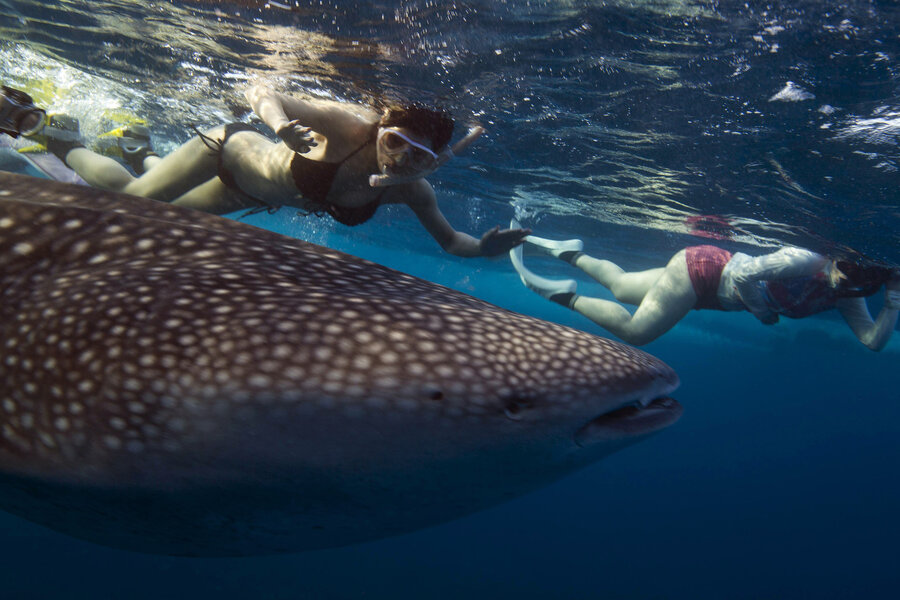El Niño brings rare fish to US West Coast
The warming of surface temperatures in the Pacific Ocean along California’s coast has drawn tropical fish rarely found in the area.
El Niño’s weather patterns are credited with the higher temperatures that are enticing vibrantly colored fish and other seldom-seen species to the region.
Hundreds of sightings have been documented by scientists and fisherman looking for the chance to pull in an uncommon haul.
Whale and hammerhead sharks, wahoo, and largemouth blenny have been seen from San Diego to San Francisco, as they follow the warm currents up from Mexico.
"Every tropical fish seems to have punched their tickets to Southern California," said Milton Love, a marine science researcher at the University of California, Santa Barbara, to Reuters.
In late October, two Puffer fish were discovered farther north in Monterey Bay, Calif., according to the San Francisco Chronicle. The conservation group Save Our Shores said the creatures are usually not found farther north than Mexico.
But this is not the first time such an occurrence has taken place.
In 1997, the Mako shark made an appearance along California’s central coast and extended up through the Pacific Northwest, and a marlin was captured along the Washington state coast. The waters were so warm that year that some Oregon surfers tossed aside wetsuits for shorts in the normally frigid waters.
In 2014, there were similar reports of tropical fish reaching the west coast of the United States.
The movement of warm water species north during an El Niño year is typical, according to the National Oceanic and Atmospheric Administration.
In past El Niño years, warming waters and the appearance of new species not normally found have been documented as far north as Alaska, NOAA said. El Niño causes "physical and biological changes in our oceans that affect fish distribution."
Sea surface temperatures during an El Niño year are traditionally higher than usual in the west, reports NOAA, which also maps changes through systems of buoys.
California meteorologist Josh Rubenstein said there has been a 2-degree temperature change in Southern California because of El Niño, which has in the past caused significant rainfall in the area.
Josh Hunt, who charters boats in Los Angeles, said there have been a trove of new species thus far this year including blue and black marlins and wahoos.
"I mean that’s just unheard of basically," Mr. Hunt told KCBS-TV. "That’s really where it gets really crazy for this El Niño."
Phil Hasting, of the Scripps Institution of Oceanography, told Reuters he nabbed his first sighting of a largemouth blenny fish over the summer in San Diego – a species usually seen in Mexico’s Baja California.
Los Angeles County’s Natural History Museum’s Rick Feeney, a fish expert, said he has encountered smaller, more colorful fish near San Diego, including the spotfin burfish.
"I’ve been fishing this bay all my life,” said Michael Franklin to Reuters, "and I’ve never seen anything like this."





